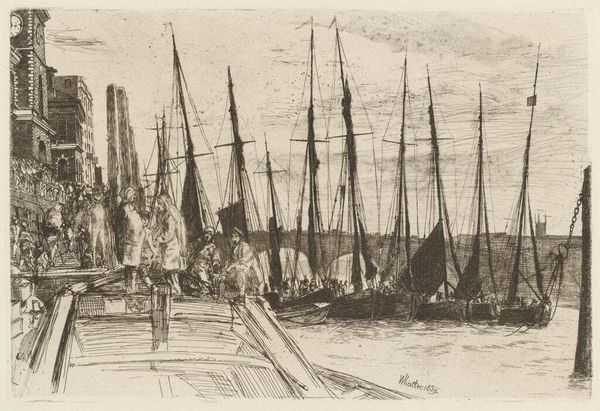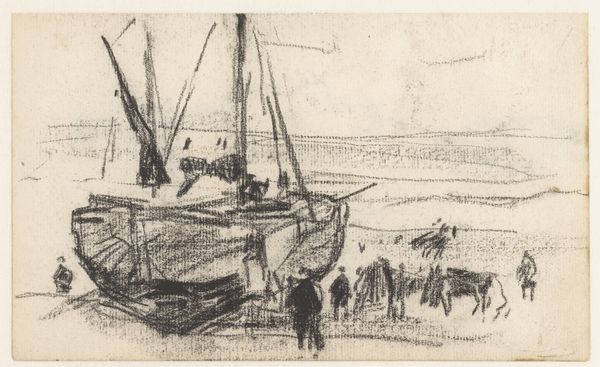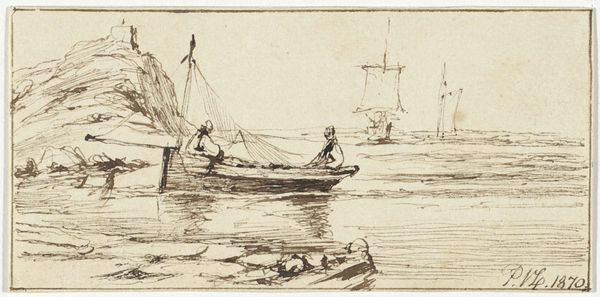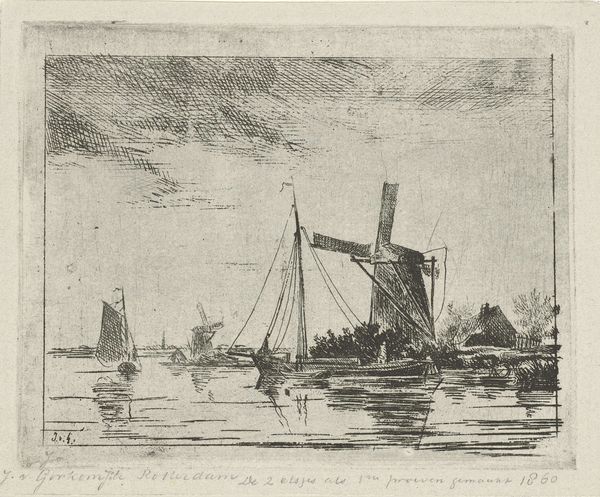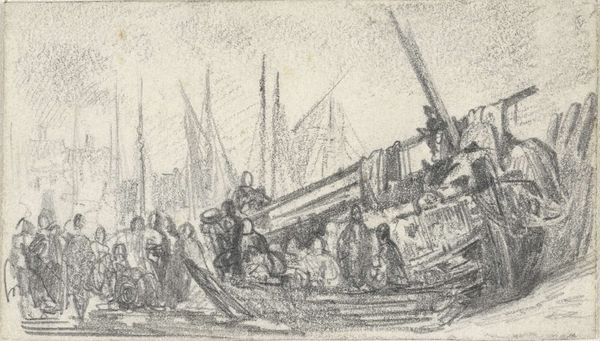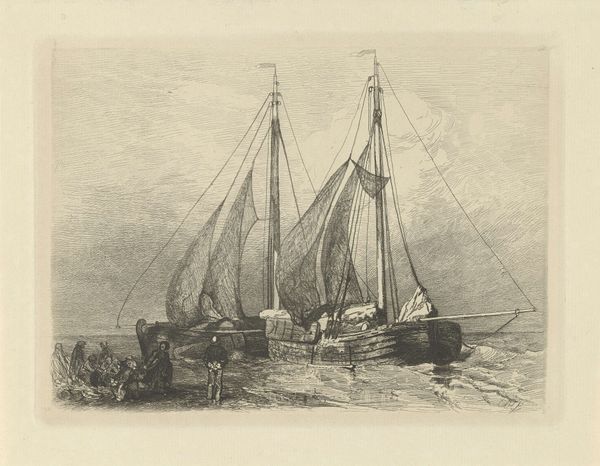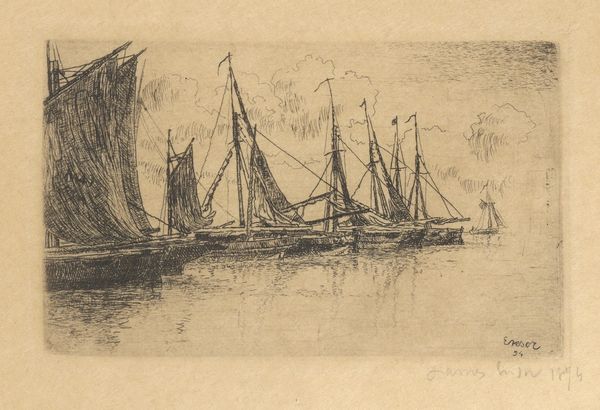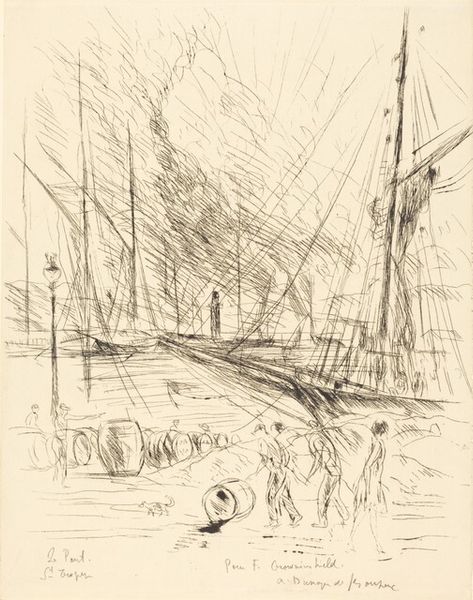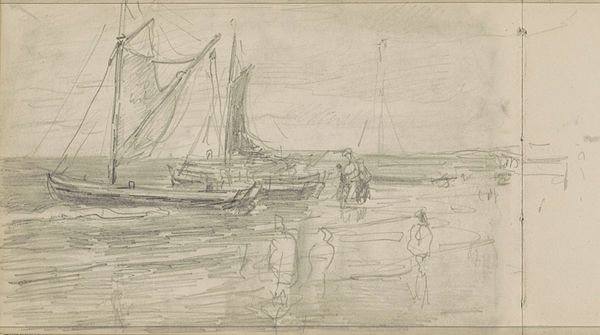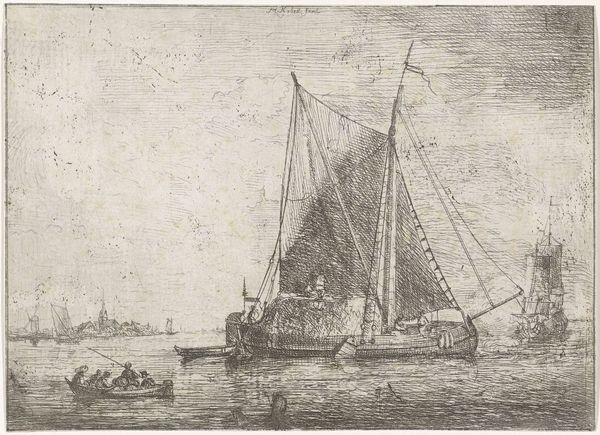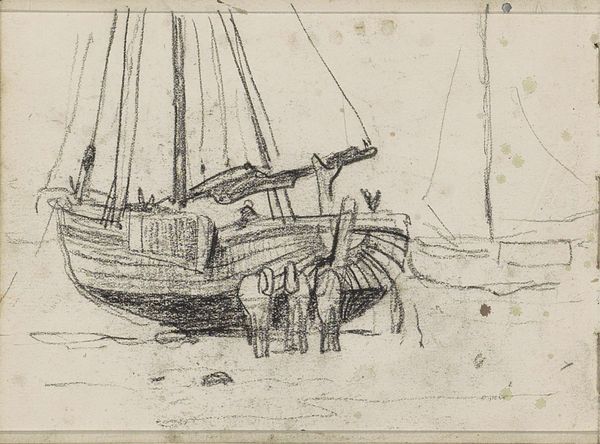
Copyright: Public domain
Editor: Here we have Arkady Rylov's "On the steamer Sineus", created in 1895 using charcoal and pencil. The stark black and white gives the scene an almost documentary feel, but it’s hard to say what the scene’s actually depicting, just from its face. What do you make of this drawing? Curator: The "On the steamer Sineus" offers us a glimpse into the everyday experience of travel and labour at the end of the 19th century, right? Sketches like these often become more intriguing when viewed in relation to artistic production as shaped by the societal needs and public institutions like academies or even exhibition venues. Does that Steamer have other historical significances, I wonder? Editor: That's interesting! I hadn't considered the institutions influencing its creation, like art academies and what that would mean for artists during this period, beyond aesthetic value. Curator: Considering the Romantic period's focus on landscapes, how might the depiction of this scene challenge or play with those conventions in the late 19th century? Also how were workers visually represented during that period and what was its overall social climate? Perhaps the quick lines denote a hurried production, and may reflect its ultimate function within an institutional setting. Editor: It almost seems to challenge the Romantic idea. This isn’t a grand vista of nature; it's quite gritty and industrial with those people doing who-knows-what… Curator: Exactly! By understanding its artistic environment and institutional frameworks of that era, we get an intriguing lens for re-evaluating seemingly everyday subjects. Editor: I see your point. Considering these sketches as glimpses of the daily experiences shaped by those institutions really reframes how I view the drawing! Curator: It's amazing how thinking about the cultural role of institutions informs our reading.
Comments
No comments
Be the first to comment and join the conversation on the ultimate creative platform.

